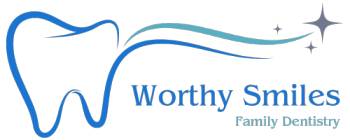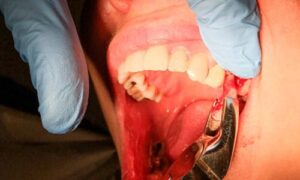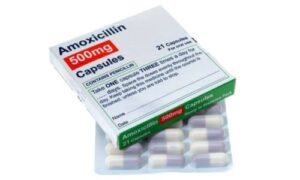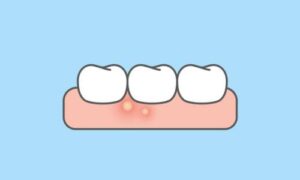Introduction
As environmental consciousness grows, various industries embrace eco-friendly practices, and dentistry is no exception. Dentistry has traditionally been associated with high levels of waste and pollution, but eco-friendly dentistry aims to change that by implementing sustainable practices. Dentists can reduce their carbon footprint by adopting environmentally friendly materials and techniques and contributing to a healthier planet. Eco-friendly dentistry goes beyond oral health to prioritize sustainable, environmentally conscious practices contributing to a healthier planet. In this article, we will explore the concept of eco-friendly dentistry and highlight sustainable practices that dental professionals can adopt.
Understanding Eco-Friendly Dentistry
1. Reducing Environmental Impact
Eco-friendly dentistry involves minimizing the environmental footprint of dental practices. This includes adopting practices that reduce waste, conserve resources, and promote sustainability. Some examples of reducing environmental impact in dentistry include using digital X-rays instead of traditional film X-rays, eliminating the need for harmful chemicals and reducing radiation exposure. Another practice is implementing a paperless system for patient records and administrative tasks, reducing paper use and promoting a more efficient workflow.
2. Green Dentistry Initiatives
Green dentistry initiatives focus on incorporating environmentally friendly measures into dental clinics. These initiatives aim to create a balance between providing quality dental care and minimizing negative impacts on the environment. Some examples of green dentistry initiatives include using energy-efficient equipment and appliances, such as LED lights and low-flow water systems, to reduce energy consumption. Additionally, dental clinics may implement recycling programs for materials like dental amalgam and other waste products to minimize their environmental footprint.
Sustainable Practices in Eco-Friendly Dentistry
1. Digital Patient Records
Transitioning to digital patient records eliminates the need for excessive paper usage. This reduces waste and improves efficiency in dental clinics by allowing for easier access and organization of patient information. Furthermore, eco-friendly dentistry practices may also involve using biodegradable or compostable materials for dental supplies and packaging to minimize environmental impact further. Digital records reduce waste and streamline administrative processes, contributing to a more efficient and eco-friendly dental practice.
2. Energy-Efficient Equipment
Investing in energy-efficient dental equipment helps reduce energy consumption in dental offices. From lighting to dental chairs and imaging equipment, choosing energy-efficient options can significantly decrease the environmental impact of dental practices. Additionally, implementing proper waste management practices, such as recycling and disposal of hazardous materials, can further reduce the ecological footprint of dental offices. By educating staff and patients about sustainable practices, dental practices can contribute to a greener future while still providing high-quality oral care.
3. Water Conservation
Implementing water conservation measures, such as using water-saving devices and educating patients on responsible water use during oral care, helps minimize water wastage in dental procedures. These measures include installing low-flow faucets and toilets and using dental equipment that reduces water consumption. By conserving water, dental offices can contribute to the overall conservation of this precious resource and promote sustainable practices in their communities.
4. Biodegradable and Recyclable Materials
Dental professionals can choose biodegradable and recyclable materials for various purposes, including packaging, disposable products, and patient amenities. This reduces the amount of non-biodegradable waste generated by dental practices. In addition, using biodegradable and recyclable materials can also help reduce the environmental impact of dental offices by minimizing the amount of waste that ends up in landfills. By making conscious choices in material selection, dental professionals can promote a more sustainable and eco-friendly approach to dentistry.
5. Amalgam Separator Installation
Amalgam separators capture and recycle amalgam waste generated during dental procedures. Installing amalgam separators prevents mercury and other contaminants from entering the water supply, promoting environmental and human health. In addition to amalgam separators, dental offices can also implement other waste management practices such as recycling and proper disposal of hazardous materials. By properly segregating and disposing of different types of waste, dental professionals can further minimize their environmental impact and contribute to a healthier ecosystem.
6. Use of Eco-Friendly Products
Dental professionals can opt for eco-friendly dental products, such as biodegradable toothbrushes, eco-friendly toothpaste packaging, and compostable floss. These choices align with sustainable practices and appeal to environmentally conscious patients. Additionally, dental professionals can consider using digital X-rays instead of traditional film X-rays, which reduces the amount of hazardous waste generated. They can also explore alternative energy sources, such as solar panels, to power their dental offices and reduce their carbon footprint.
7. Reusable and Autoclavable Instruments
Utilizing reusable instruments that can be autoclaved and sterilized instead of single-use disposable items contributes to waste reduction in dental practices. This shift minimizes the environmental impact associated with disposable materials. Furthermore, dental professionals can properly implement recycling programs to dispose of paper, plastic, and glass materials. This reduces waste and promotes a more sustainable and eco-friendly approach to dental care.
Dentistry is responsible for contributing 3% of the overall carbon footprint of the healthcare industry.
Educating Patients on Eco-Friendly Dentistry
1. Promoting Sustainable Oral Hygiene Practices
Dental professionals can educate patients on sustainable oral care practices, such as using bamboo toothbrushes, choosing eco-friendly dental products, and adopting water-saving techniques during daily oral hygiene routines. By encouraging patients to make these small changes, dental professionals can help reduce the environmental impact of oral care practices. Additionally, they can provide information on the proper disposal of dental products to ensure that patients are not contributing to landfill waste.
2. Encouraging Responsible Disposal
Guiding proper disposal of dental products, including recyclable materials, helps patients contribute to eco-friendly practices beyond the dental office. Proper disposal ensures that waste is managed responsibly. This can prevent harmful substances from leaching into the environment and minimize the pollution caused by improper disposal methods. Dental professionals can also educate patients on alternative, eco-friendly oral care products that are biodegradable or made from sustainable materials, reducing their environmental impact.
Conclusion: Eco-Friendly Dentistry
In conclusion, eco-friendly dentistry represents a conscientious effort to align oral health practices with environmental sustainability. Dental professionals can be pivotal in promoting eco-friendly dentistry by adopting sustainable practices within their clinics and educating patients on responsible oral care choices. By incorporating environmentally conscious measures, the dental industry can contribute to a healthier planet while continuing to provide essential oral health services. Eco-friendly dentistry is not just a trend; it’s a commitment to the well-being of patients and the environment.
FAQs about Eco-Friendly Dentistry
Q1: What is the role of nutrition in dental health?
A1: Nutrition plays a crucial role in dental health. A balanced diet of calcium, phosphorus, and vitamins contributes to strong teeth and gums. Additionally, avoiding excessive sugar intake helps prevent tooth decay.
Q2: How often should I visit the dentist for a check-up?
A2: It is generally recommended to visit the dentist for a check-up and cleaning every six months. However, individual needs may vary, and your dentist may suggest a different schedule based on your oral health.
Q3: What are the different types of dental fillings?
A3: Common types of dental fillings include amalgam (silver), composite (tooth-coloured), ceramic (porcelain), glass ionomer, and gold. The choice of filling depends on factors such as location, aesthetics, and budget.
Q4: How can I maintain good oral hygiene at home?
A4: To maintain good oral hygiene at home, brush your teeth at least twice a day using fluoride toothpaste, floss daily to clean between teeth, use mouthwash, and replace your toothbrush regularly. Additionally, limit sugary food and drink intake.
Q5: What is the link between oral health and overall well-being?
A5: Oral health is connected to overall well-being. Poor oral health has been linked to various systemic conditions, including cardiovascular disease and diabetes. Regular dental check-ups contribute to both oral and overall health.














